Author Archives: André Åström
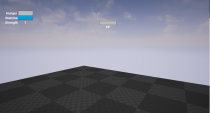
Christmas Challenge – Day 1 & 2, HUD
Hello everyone, I read about a game development challenge on the Unreal Development facebook group that I found interesting and wanted to try out.
Basically it is that you set aside one hour everyday to develop a game inside Unreal Engine (this is of course optional, it could be any other engine out there including your own). For me this was a prime opportunity to yet again try to dive into the monstrous being that is Unreal Engine but this time […]

Christmas Challenge – Day 1 & 2, HUD
Hello everyone, I read about a game development challenge on the Unreal Development facebook group that I found interesting and wanted to try out.
Basically it is that you set aside one hour everyday to develop a game inside Unreal Engine (this is of course optional, it could be any other engine out there including your own). For me this was a prime opportunity to yet again try to dive into the monstrous being that is Unreal Engine but this time […]
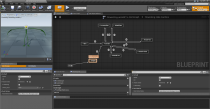
Week three, Big Game Project
Animations in Unreal Engine (3D)
Note: This article assumes basic knowledge about the unreal engine 4 framework, including Blueprints.
Unreal uses state machines to power their animation system in their latest engine, as of 2015. They use a visual editor to set up the state machine, at the creators disposal are two different node types. There is the State node and the Conduit node.
Conceptually, it is best to think of a state as just an organized portion of an AnimGraph that we know the […]

Week three, Big Game Project
Animations in Unreal Engine (3D)
Note: This article assumes basic knowledge about the unreal engine 4 framework, including Blueprints.
Unreal uses state machines to power their animation system in their latest engine, as of 2015. They use a visual editor to set up the state machine, at the creators disposal are two different node types. There is the State node and the Conduit node.
Conceptually, it is best to think of a state as just an organized portion of an AnimGraph that we know the […]

Template and component system
This week we started a new course called Game Programming III and during the lectures this week we learned about templates, linked lists and binary search tree, but the thing I am going to write about today is templates.
Templates are a method for creating generic functions or classes, and what I mean by generic is that they are type independent. You can use them for integers, floating-point numbers, Booleans etcetera, meaning that the function or the class can be reused […]

Template and component system
This week we started a new course called Game Programming III and during the lectures this week we learned about templates, linked lists and binary search tree, but the thing I am going to write about today is templates.
Templates are a method for creating generic functions or classes, and what I mean by generic is that they are type independent. You can use them for integers, floating-point numbers, Booleans etcetera, meaning that the function or the class can be reused […]

Template and component system
This week we started a new course called Game Programming III and during the lectures this week we learned about templates, linked lists and binary search tree, but the thing I am going to write about today is templates.
Templates are a method for creating generic functions or classes, and what I mean by generic is that they are type independent. You can use them for integers, floating-point numbers, Booleans etcetera, meaning that the function or the class can be reused […]

Template and component system
This week we started a new course called Game Programming III and during the lectures this week we learned about templates, linked lists and binary search tree, but the thing I am going to write about today is templates.
Templates are a method for creating generic functions or classes, and what I mean by generic is that they are type independent. You can use them for integers, floating-point numbers, Booleans etcetera, meaning that the function or the class can be reused […]
Board game analysis – Smallworld Underground
Game description
Smallworld underground is a game for 2-5 players for the age of eight and up. The objective is to have as many victory coins as possible at the end of a certain number of rounds. The game has 15 different races and 21 different powers that can be combined with those races.
To acquire victory coins you conquer land areas with your races unit tokens, you get one coin for each area in the end of your turn. You then […]
Board game analysis – Smallworld Underground
Game description
Smallworld underground is a game for 2-5 players for the age of eight and up. The objective is to have as many victory coins as possible at the end of a certain number of rounds. The game has 15 different races and 21 different powers that can be combined with those races.
To acquire victory coins you conquer land areas with your races unit tokens, you get one coin for each area in the end of your turn. You then […]
Board game analysis – Smallworld Underground
Game description
Smallworld underground is a game for 2-5 players for the age of eight and up. The objective is to have as many victory coins as possible at the end of a certain number of rounds. The game has 15 different races and 21 different powers that can be combined with those races.
To acquire victory coins you conquer land areas with your races unit tokens, you get one coin for each area in the end of your turn. You then […]
Board game analysis – Smallworld Underground
Game description
Smallworld underground is a game for 2-5 players for the age of eight and up. The objective is to have as many victory coins as possible at the end of a certain number of rounds. The game has 15 different races and 21 different powers that can be combined with those races.
To acquire victory coins you conquer land areas with your races unit tokens, you get one coin for each area in the end of your turn. You then […]
Board game analysis – Dust
Introduction
During the course Advanced game design we were split into groups to play and analyse a board game. Our group chose the strategy game Dust.
Game description
Dust is a board strategy game, for two to six players, similar to RISK where your objective is to hold key locations on the game board which give victory points and the first to a set amount of victory points win. To do this the players have different cards and units to their disposal. The […]
Board game analysis – Dust
Introduction
During the course Advanced game design we were split into groups to play and analyse a board game. Our group chose the strategy game Dust.
Game description
Dust is a board strategy game, for two to six players, similar to RISK where your objective is to hold key locations on the game board which give victory points and the first to a set amount of victory points win. To do this the players have different cards and units to their disposal. The […]
Board game analysis – Dust
Introduction
During the course Advanced game design we were split into groups to play and analyse a board game. Our group chose the strategy game Dust.
Game description
Dust is a board strategy game, for two to six players, similar to RISK where your objective is to hold key locations on the game board which give victory points and the first to a set amount of victory points win. To do this the players have different cards and units to their disposal. The […]
Board game analysis – Dust
Introduction
During the course Advanced game design we were split into groups to play and analyse a board game. Our group chose the strategy game Dust.
Game description
Dust is a board strategy game, for two to six players, similar to RISK where your objective is to hold key locations on the game board which give victory points and the first to a set amount of victory points win. To do this the players have different cards and units to their disposal. The […]
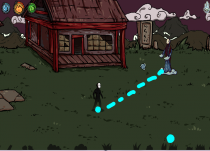
Simple AI
Hello dear readers,
What is a PvE¹ game if there is no AI²? Even if the AI is fairly simple it will still be better than no AI at all, if nothing else there will be a few laughs about the behaviour of the NPC³.
So in our game we have three distinct enemies:
The Water enemy which is aiming directly at you, or slightly forward from your direction
The Fire enemy, which is aiming slightly above you and slightly below you.
The Wood enemy, which […]

Simple AI
Hello dear readers,
What is a PvE¹ game if there is no AI²? Even if the AI is fairly simple it will still be better than no AI at all, if nothing else there will be a few laughs about the behaviour of the NPC³.
So in our game we have three distinct enemies:
The Water enemy which is aiming directly at you, or slightly forward from your direction
The Fire enemy, which is aiming slightly above you and slightly below you.
The Wood enemy, which […]
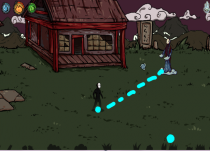
Simple AI
Hello dear readers,
What is a PvE¹ game if there is no AI²? Even if the AI is fairly simple it will still be better than no AI at all, if nothing else there will be a few laughs about the behaviour of the NPC³.
So in our game we have three distinct enemies:
The Water enemy which is aiming directly at you, or slightly forward from your direction
The Fire enemy, which is aiming slightly above you and slightly below you.
The Wood enemy, which […]

Simple AI
Hello dear readers,
What is a PvE¹ game if there is no AI²? Even if the AI is fairly simple it will still be better than no AI at all, if nothing else there will be a few laughs about the behaviour of the NPC³.
So in our game we have three distinct enemies:
The Water enemy which is aiming directly at you, or slightly forward from your direction
The Fire enemy, which is aiming slightly above you and slightly below you.
The Wood enemy, which […]
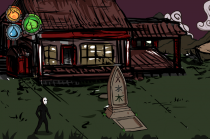
Heads Up Display
Who does not like a good HUD¹?
You can show a lot with a HUD, and there is almost always a reason to implement it. Because you want to be able to give instant feedback to the player. Such as health increase or an increase of ammo.
However making an HUD is not always easy. It is easy to make it clumsy and irrelevant, with a lot of unnecessary information.
Though there is much to be said about HUD’s, the thing that […]

Heads Up Display
Who does not like a good HUD¹?
You can show a lot with a HUD, and there is almost always a reason to implement it. Because you want to be able to give instant feedback to the player. Such as health increase or an increase of ammo.
However making an HUD is not always easy. It is easy to make it clumsy and irrelevant, with a lot of unnecessary information.
Though there is much to be said about HUD’s, the thing that […]
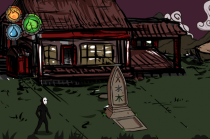
Heads Up Display
Who does not like a good HUD¹?
You can show a lot with a HUD, and there is almost always a reason to implement it. Because you want to be able to give instant feedback to the player. Such as health increase or an increase of ammo.
However making an HUD is not always easy. It is easy to make it clumsy and irrelevant, with a lot of unnecessary information.
Though there is much to be said about HUD’s, the thing that […]

Heads Up Display
Who does not like a good HUD¹?
You can show a lot with a HUD, and there is almost always a reason to implement it. Because you want to be able to give instant feedback to the player. Such as health increase or an increase of ammo.
However making an HUD is not always easy. It is easy to make it clumsy and irrelevant, with a lot of unnecessary information.
Though there is much to be said about HUD’s, the thing that […]